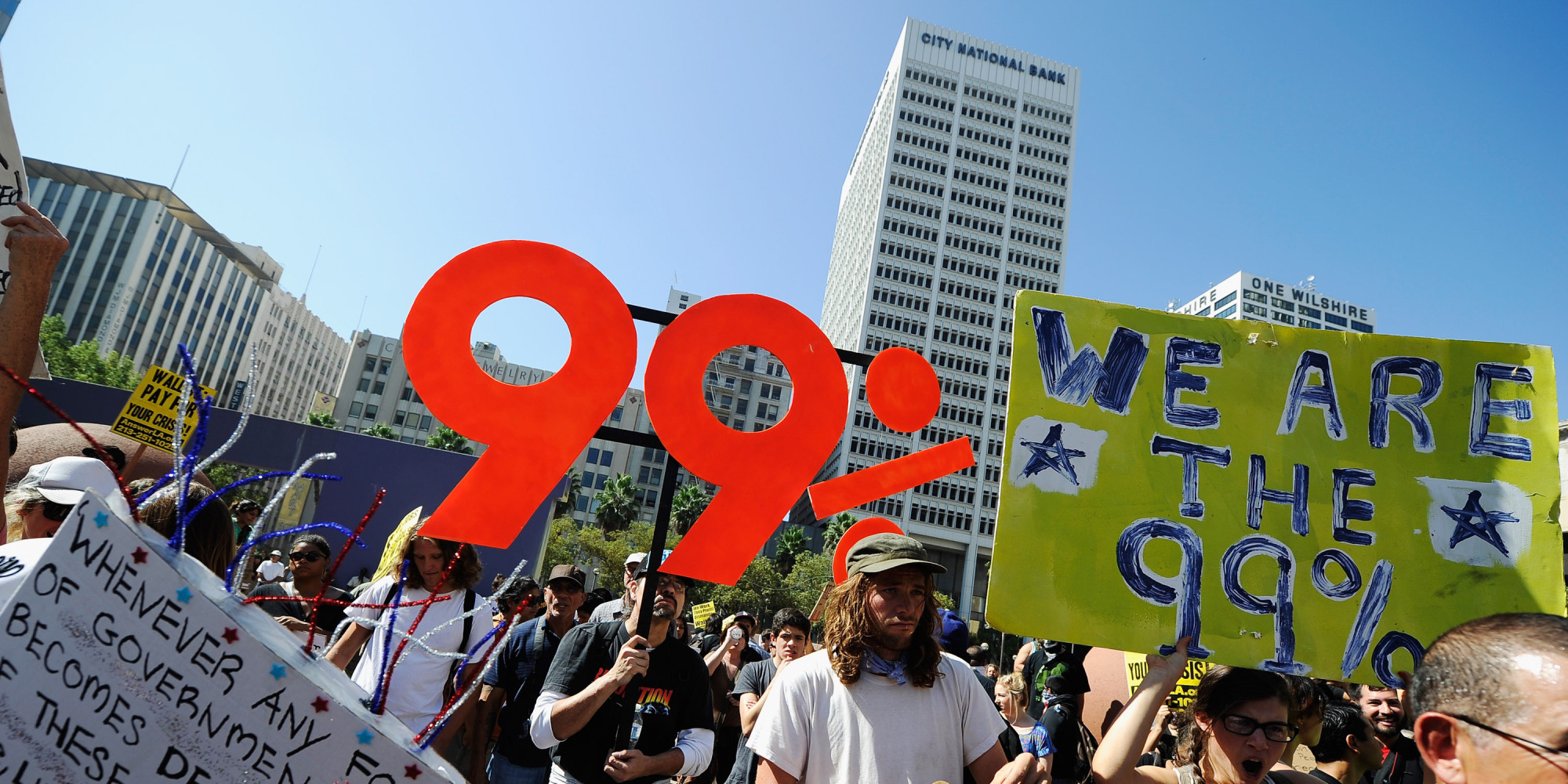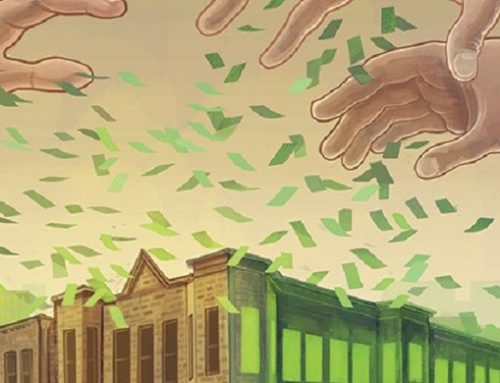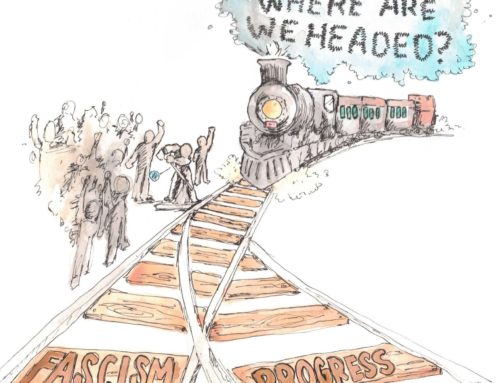(published 2011-12-07)

LOS ANGELES, CA – OCTOBER 01: Protesters hold signs as they march to Los Angeles City Hall during the “Occupy Los Angeles” demonstration in solidarity with the ongoing “Occupy Wall Street” protest in New York City on October 1, 2011 in Los Angeles, California. The protesters slogan, “We are the 99 percent,” calls attention to the fact that marchers are not part of the 1 percent of Americans who hold a vast portion of the nation’s wealth. (Photo by Kevork Djansezian/Getty Images)
Capitalism is going through one of its worst crises ever. This is neither a cyclical crisis nor a temporary contraction. It is a deeply rooted crisis based on the voracity of capital and the capitalist class that manages and controls capital. So far, most of the solutions offered have been short lived, and it seems that capital is digging itself deeper into its own hole.
This crisis is not only national, but international as well. Just last week Barak Obama had to fly to Europe to participate in an emergency meeting of the G20 to once again come up with a solution. We can be sure no solution will come out of these emergency meetings benefiting the popular masses, nationally and internationally, who are really affected by these crises. But, we can guarantee that any solution agreed upon by the G20 is to preserve capital and global capitalism.
Capitalism is faced with a global resistance. So far, the Occupy resistance is at an early stage of mobilization and not yet able to transform itself into a powerful movement. These mobilizations are still spontaneous and not yet able to articulate uncompromising, anti-capitalist demands and orientations. It is important to recognize that these mobilizations can easily be recuperated by sectors of the capitalist class to benefit their alternatives as solutions to the ongoing crisis.
Who are the 99%
This crisis is affecting all classes and social categories that are dominated and exploited by capitalism. These classes and social categories are the 99%. Some elements of the crisis are generalized to us all. Some elements of the crisis are limited to particular sectors of the 99%. One thing is for sure, the commonality of these crises are the doing of capital. The only purpose of capital in any given situation, any given moment is accumulation and valorization. In other words, the only purpose of capital is for profit and for more profit. Even if the problems of the 99% are not the same, to address them we have to fight capitalism, the originator of the problem constantly creating cyclical crises and contractions.
Because of the nature of our problems, some of us think the big banks are the problem. Some think the Fed is the problem. Some students, a social category, are resisting the fact that their lives have been mortgaged and their future of debt is bleak. Some of us are recently unemployed, and hope of finding employment is slim to none. Some of us work for low wages and can no longer afford the basic necessities of life for our families and us. It feels like we are unemployed, even if we are working.
With the austerity measures, real existing wages are comparable to wages of a decade ago and more concessions are asked of the 99%. At the same time, capital’s thirst for profit is becoming more and more repugnant. Gas prices are going up. School tuition is rising. Food prices are skyrocketing. Banks are charging more fees on our own money, money they used initially to make a profit. More ways are constantly being designed to extract profits from us. Capitalism has totally undone some of the rights that working people have sacrificed their lives for, such as the 8-hour workday. A jobs bill is being promised to us, but again given the nature of capital, our wages are not in question. Capital has found new ways to make profits, totally bypassing consumers. Even if consumers are used, it is mostly for the need to speculate. So, many of the 99% are no longer needed by sectors of capital as consumers, and are in a process of proletarianization: erasure of the middle class, forcing many into or closer to the working class.
The 99% are: immigrant workers forced to leave their homelands because of capitalism, prison workers, industrial and service workers, all working people, and social categories such as students, intellectuals, unemployed, the objectively unemployed working people, the small business owners and all who are either dominated and/or exploited by capital. We are not yet a unified political block. Some of us see the need to reform capital to resolve some of our particular problems, while some of us understand the necessity to defeat capital and the capitalist class.
It is important that we all see that the core of our problems is not some defective parts of capitalism but capitalism itself as an organization of society that is based on profit over the needs of the collective. We need to organize … so that resistance and mobilizations transform into a powerful popular movement … where all the classes that are dominated and exploited, play a decisive role in the fight against capitalism.
We need to develop a combative, autonomous movement, independent of all state political and ideological apparatus (such as the traditional two party electoral system), as well as non-state political apparatus at the service of capital and funded by capitalism: NGOs/CBOs, business union bureaucrats. We must pursue a struggle based strictly on our interests, not to benefit any one sector of the capitalists. Benefiting even one sector of the capitalism benefits the whole capitalist class in the long term. Capitalism can no longer be reformed. It’s time to kill it.
Let’s organize to transform this mobilization into a powerful anti-capitalist/anti-imperialist movement!
Let’s unify our camp by identifying capitalism as the enemy!
The future is ours, let’s work for it!
Seize the moment! Dare to win by building our autonomous anti-capitalist/anti- imperialist movement!






[…] The 99%: Who are we really? (onestrugglesouthflorida.wordpress.com) […]